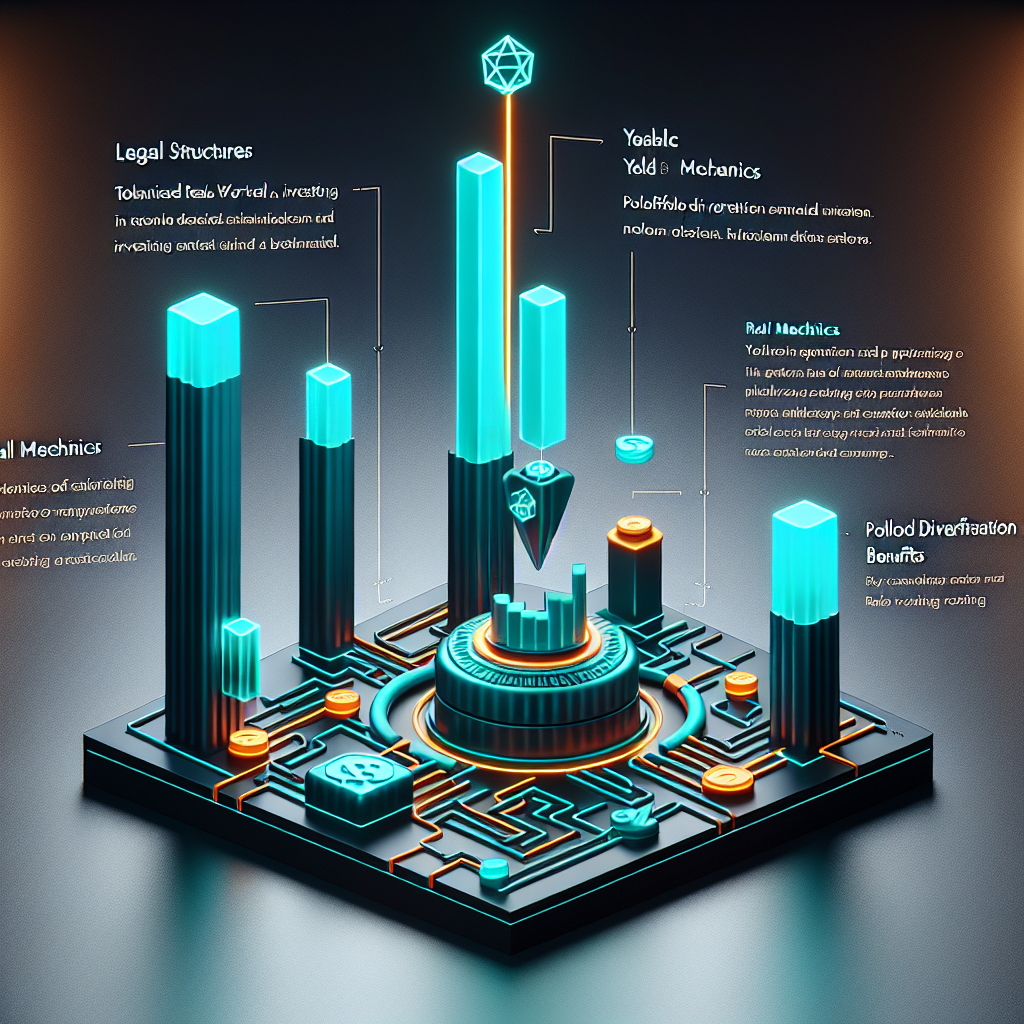Tokenized Real-World Asset (RWA) Investing Essentials: Legal Structures, Yield Mechanics, and Portfolio Diversification Benefits

Introduction: Why Tokenized Real-World Assets Matter
Tokenized real-world assets (RWAs) have moved from crypto buzzword to institutional priority. By representing tangible items such as real estate, private credit, fine art, or commodities on a blockchain, tokenization introduces fractional ownership, 24/7 liquidity, and global market access to traditionally illiquid markets. For investors, understanding the legal structures, yield mechanics, and portfolio diversification benefits of RWAs is critical to harnessing this innovation responsibly and profitably.
Legal Structures: Building Compliance Into Code
Special Purpose Vehicles (SPVs)
The most common framework for RWA tokenization is an offshore or onshore special purpose vehicle. An SPV acquires the underlying asset and issues digital tokens that mirror economic rights—dividends, rental income, or liquidation proceeds—to token holders. By isolating liabilities, SPVs protect investors from external claims and clearly separate assets from the originator’s balance sheet.
Key considerations include jurisdiction, regulatory filings, audit requirements, and the ability to adapt governing documents (operating agreement or prospectus) to smart-contract clauses. Delaware, Singapore, and Luxembourg remain favored because they combine corporate flexibility with recognized legal precedents.
Trust Structures
Trusts are popular for tokenizing income-producing real estate or precious metals. A trustee holds the asset on behalf of beneficial owners, who receive tokens representing their beneficial interest. The advantage is fiduciary oversight: trustees must act in investors’ best interest and are regulated entities. However, trust formation can be costlier than an SPV, and modifying trust deeds to interact with on-chain governance is still evolving.
Regulatory Compliant Tokens
Whether structured as security tokens under Reg D, Reg S, or Reg A+ in the United States, or as tokenized funds in the EU under AIFMD and MiCAR, compliance dictates how tokens can be offered, traded, and held. Automated compliance layers—often called “recital or transfer restrictions”—embed know-your-customer (KYC) and know-your-transaction (KYT) logic directly into the smart contract to ensure only verified investors transact within permitted jurisdictions.
Conducting proper legal due diligence, engaging experienced counsel, and verifying the issuer’s licensing status under securities, commodities, and payments regulations remain non-negotiable steps before allocating capital.
Yield Mechanics: Turning Real-World Cash Flows Into Digital Returns
Income Distribution Models
With RWA tokens, income from the underlying asset is routed to token holders either on a fixed schedule (monthly rent, quarterly coupon) or on a real-time basis through on-chain streaming protocols. Stablecoins like USDC or tokenized fiat deposits are typically used for payouts, reducing forex frictions and enabling automated reinvestment strategies.
Dynamic Yield Tranching
Smart contracts can split a single asset pool into senior, mezzanine, and junior tranches. Senior token holders receive priority principal repayment and lower yield; junior tokens absorb first losses but capture higher upside. This capital-stack engineering allows investors to align risk-return profiles with individual mandates while improving the originator’s overall capital efficiency.
Liquidity Mining and DeFi Wrappers
Some issuers pair RWA tokens with decentralized finance (DeFi) incentives. By depositing tokens into automated market makers (AMMs) or lending protocols, investors can earn additional yield from fees or reward tokens without relinquishing exposure to the underlying asset. While attractive, these extra layers add smart-contract and platform risks that must be monitored.
Performance Reporting and Oracles
To maintain trust, issuers connect real-world data feeds—such as property management systems, gold vault records, or borrower payment schedules—to on-chain oracles. Transparent dashboards present net asset value (NAV), cash-on-cash returns, and loan-to-value (LTV) ratios, aligning off-chain performance with on-chain token economics.
Portfolio Diversification Benefits
Low Correlation to Traditional Asset Classes
Empirical studies show that yields from private credit, rental real estate, or fine art display low correlation with publicly traded equities and bonds. Tokenization merely upgrades the settlement rails; the underlying cash flows remain driven by independent macro variables. Adding even a modest RWA allocation can therefore smooth portfolio volatility and improve risk-adjusted returns (Sharpe ratio).
Access to Previously Illiquid Niches
Fractional tokens lower minimum investment sizes from millions to mere hundreds of dollars, enabling individual and small institutional investors to access wind and solar farms, litigation finance, or music royalties. This democratized exposure broadens the set of return drivers beyond conventional markets.
Geographic and Sectoral Spread
Blockchain rails are borderless. Investors can diversify across jurisdictions—U.S. multi-family housing, Brazilian agribusiness receivables, or Swiss vintage cars—without setting up foreign brokerages or currency accounts. Combined with smart-contract tranching, RWA portfolios can be tailored to blend defensive, income-generating, and growth-oriented slices in one wallet.
Risk Considerations and Mitigation
While RWA investing offers compelling benefits, it is not risk-free. Legal enforceability, counterparty default, oracle manipulation, cybersecurity threats, and secondary-market liquidity gaps can erode returns. Investors should demand:
• Regular third-party audits of smart contracts and financial statements.
• Insurance coverage for custody and operational hazards.
• Robust KYC/KYT procedures to avoid entanglement with illicit funds.
• Clear redemption mechanisms if on-chain markets dislocate.
Implementation Checklist for New Investors
1. Define investment objectives—income, growth, or diversification.
2. Conduct jurisdictional and regulatory analysis.
3. Review issuer track record and governance model.
4. Examine smart-contract documentation and audit reports.
5. Start with a pilot allocation, monitor on-chain analytics, and scale exposure gradually.
Conclusion: Positioning for the Future
Tokenized RWAs bridge the gap between traditional finance and decentralized infrastructure, allowing investors to capture real-world cash flows with the efficiency of blockchain settlement. Mastery of the legal frameworks, yield mechanics, and diversification levers outlined above equips investors to participate confidently in this next evolution of capital markets. As regulations mature and on-chain primitives improve, the share of global assets represented by tokens is poised to surge—making now the ideal time to build informed exposure.